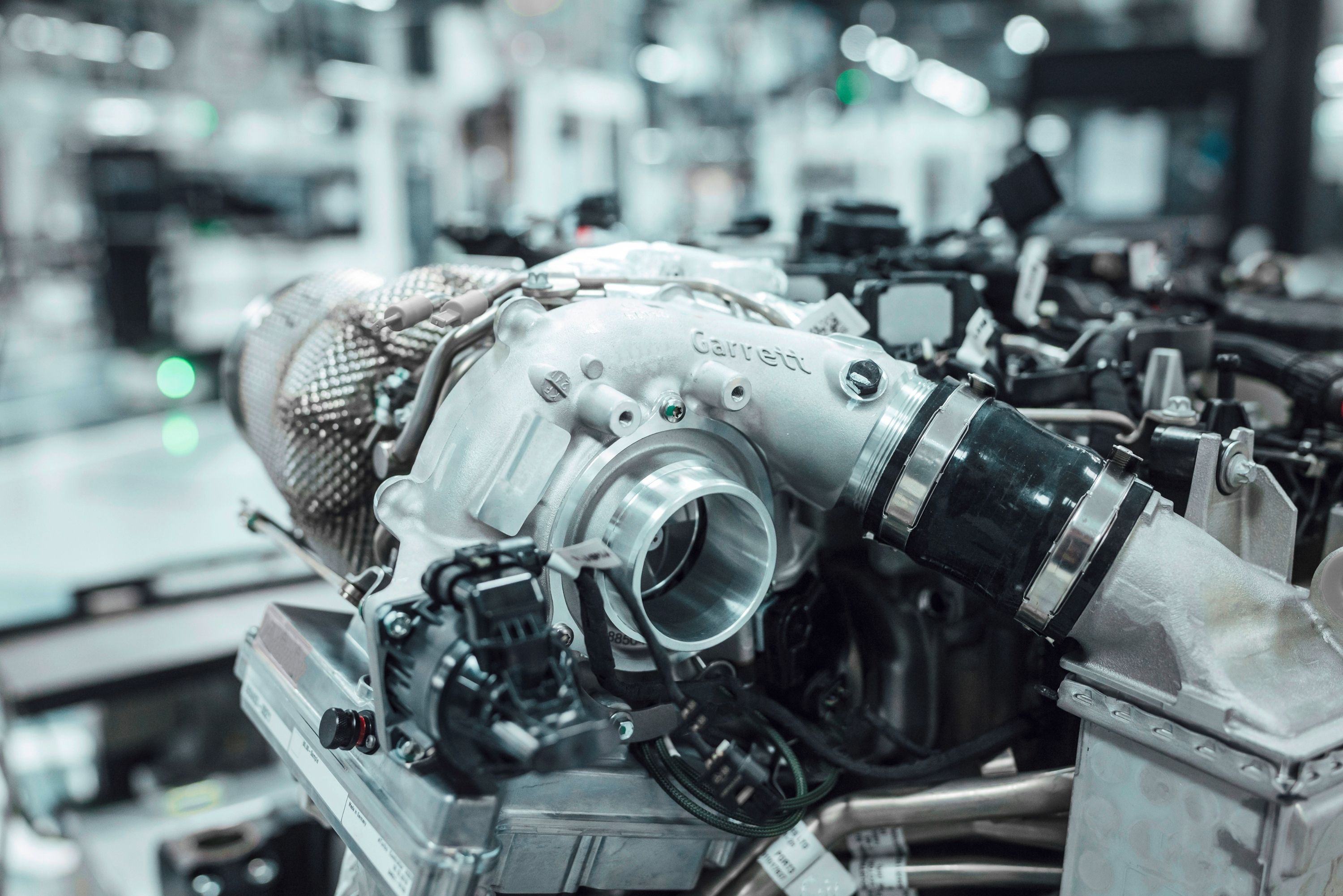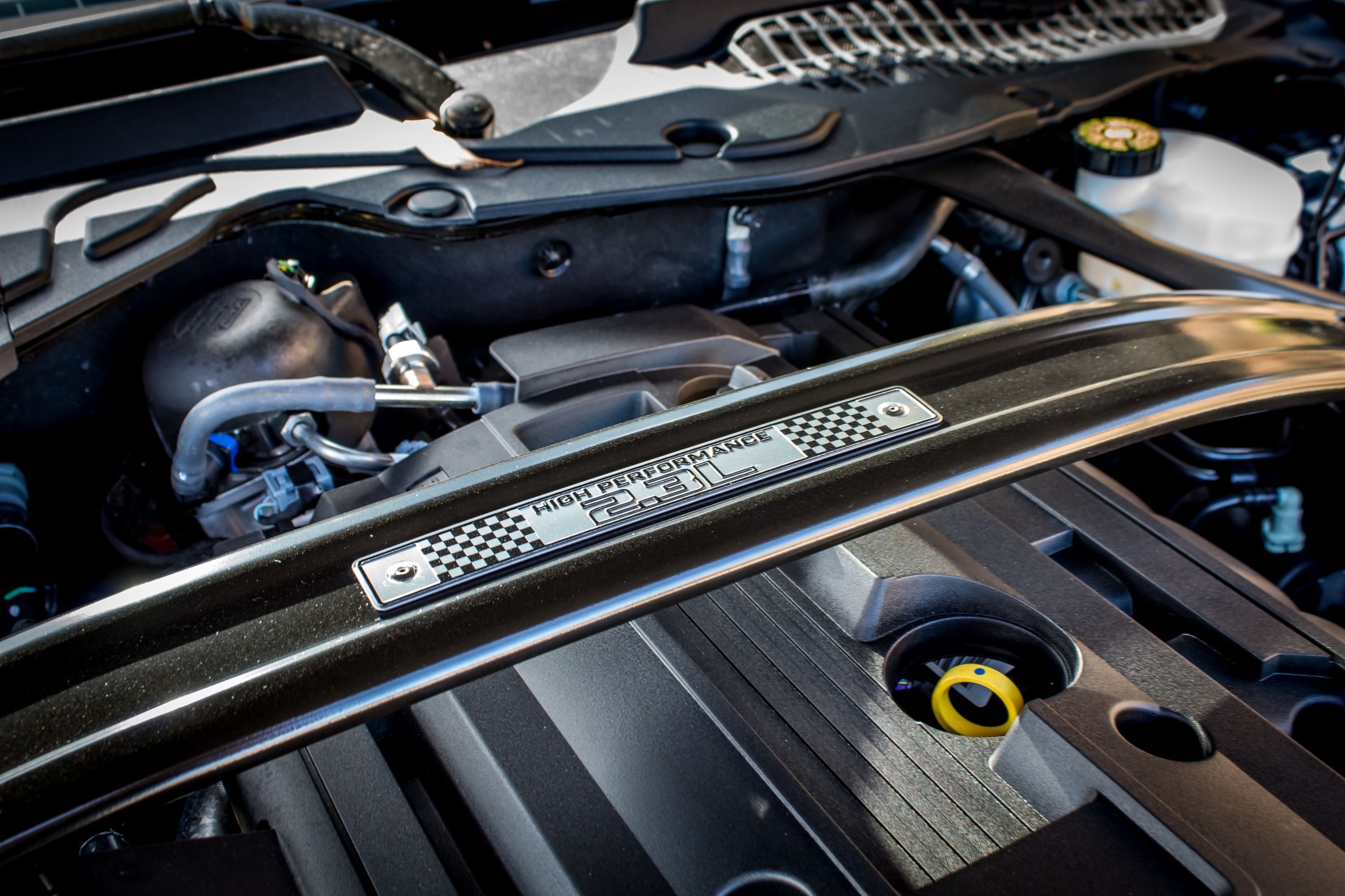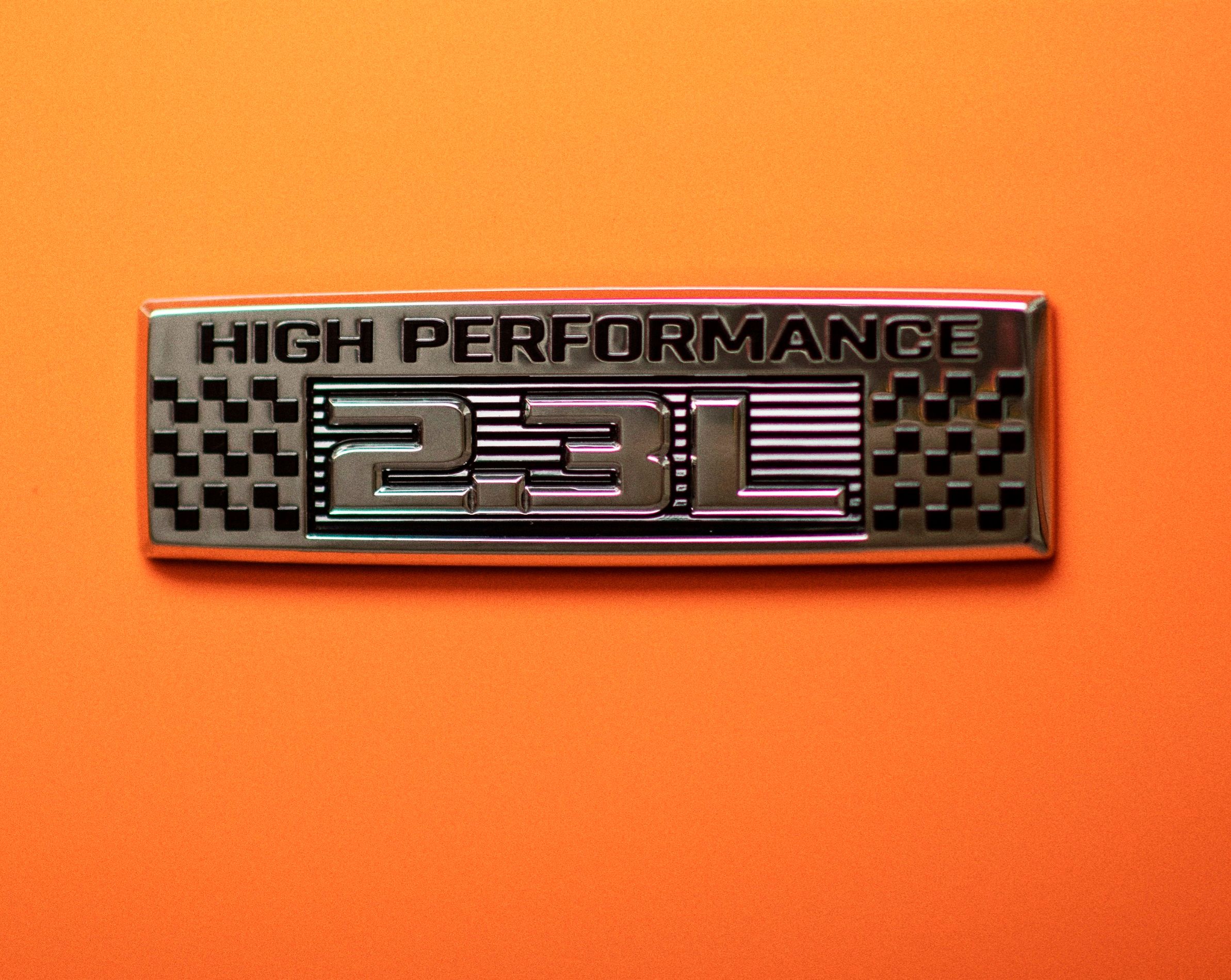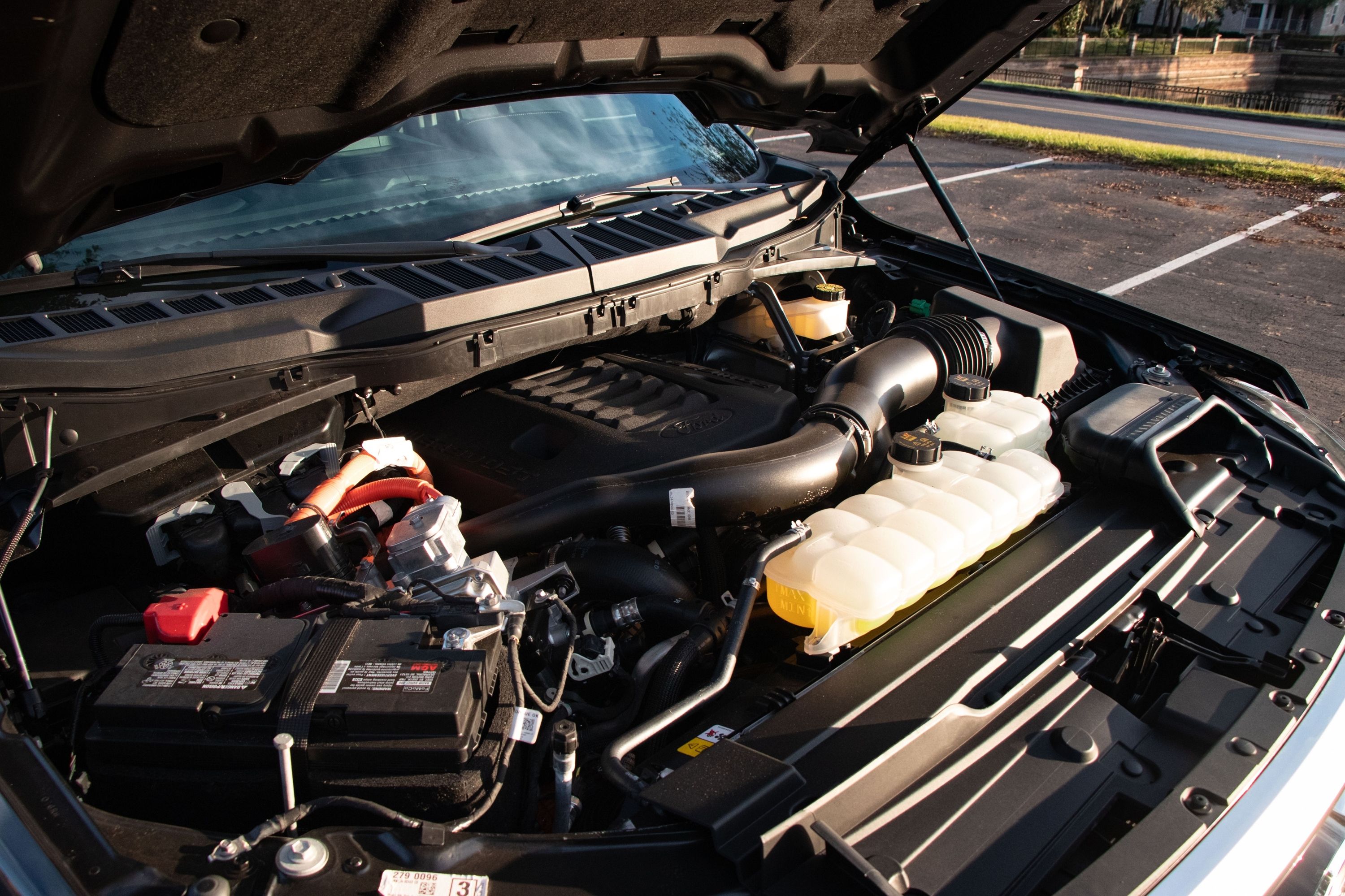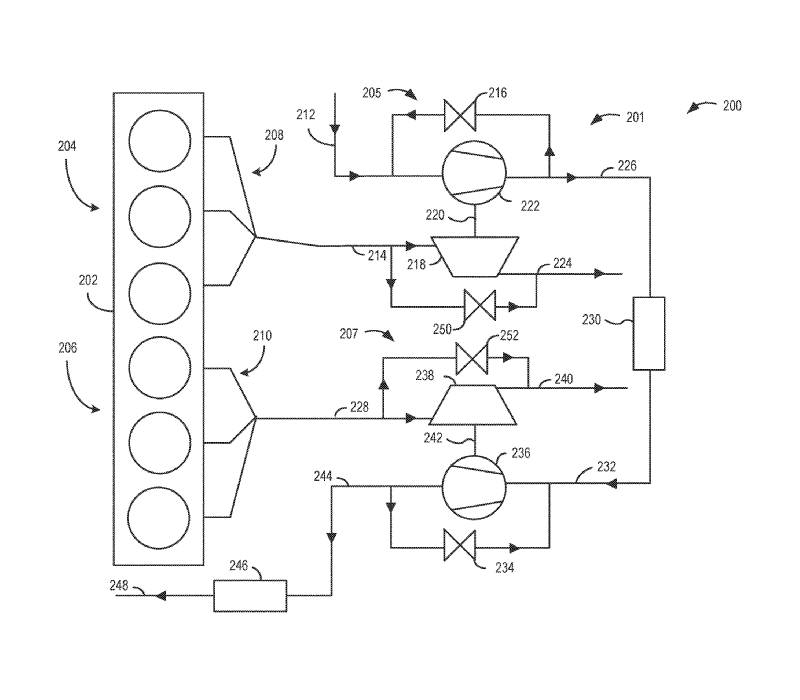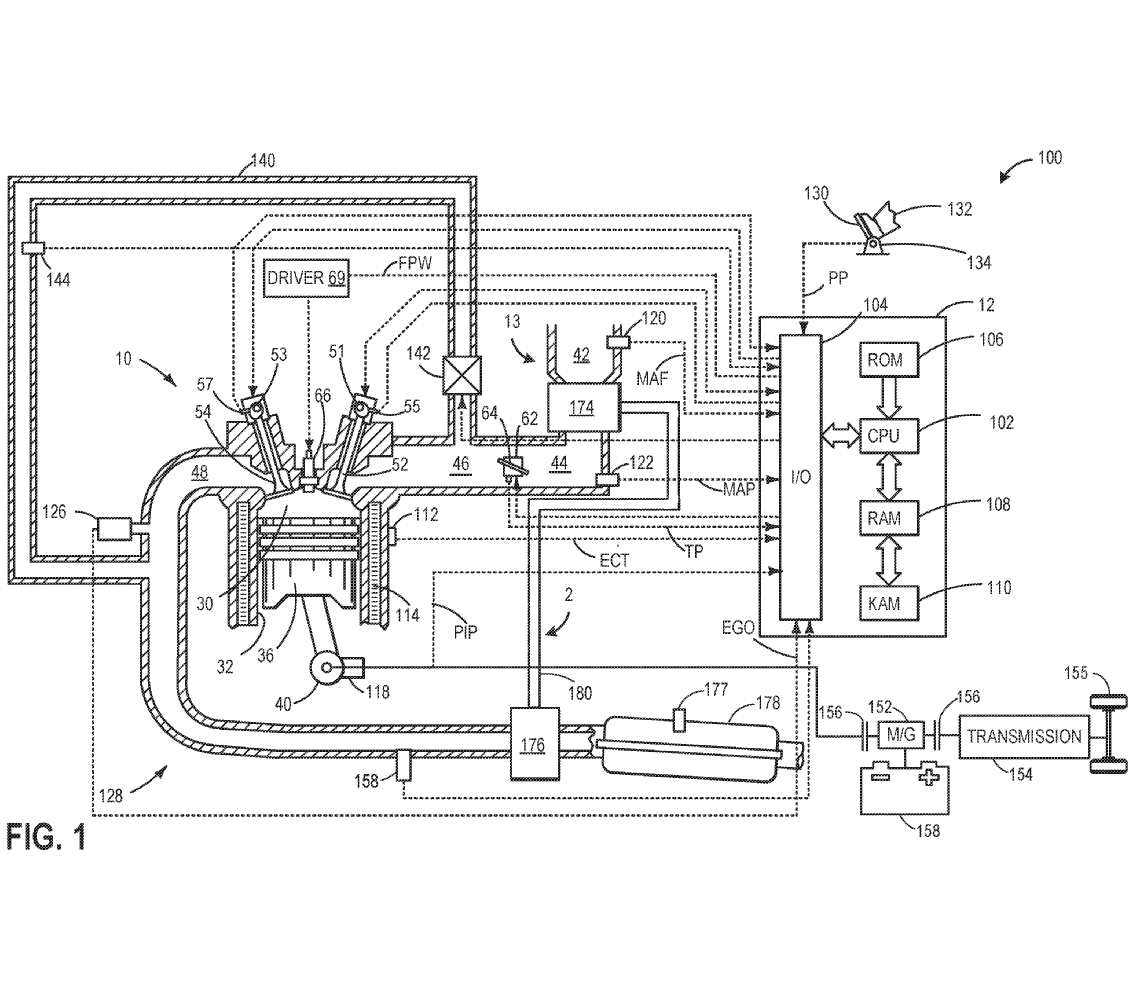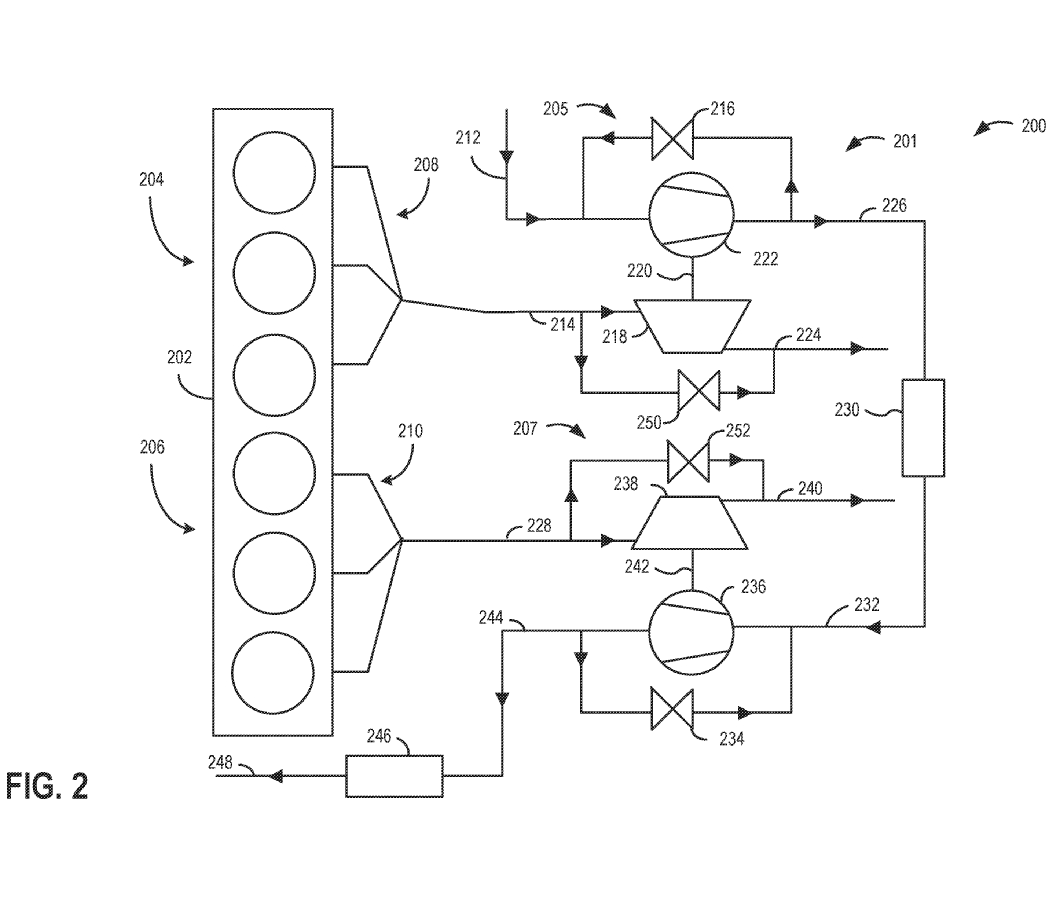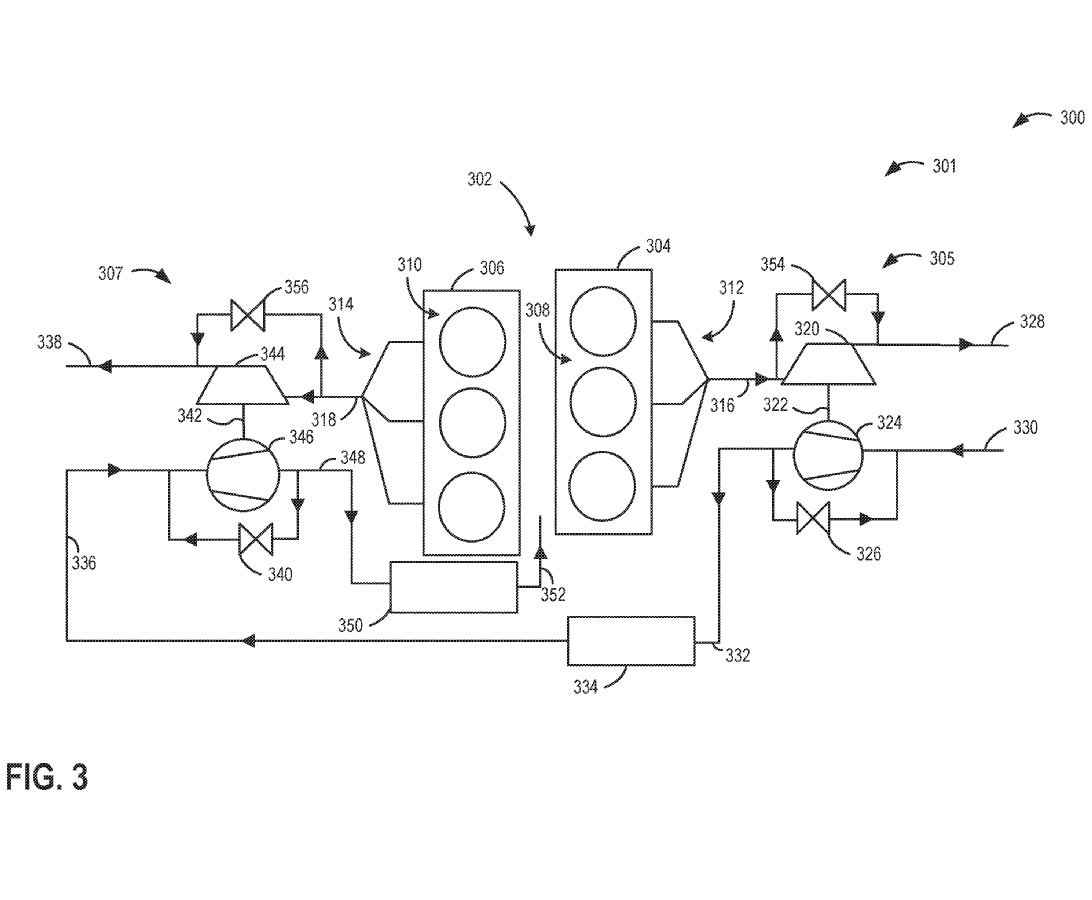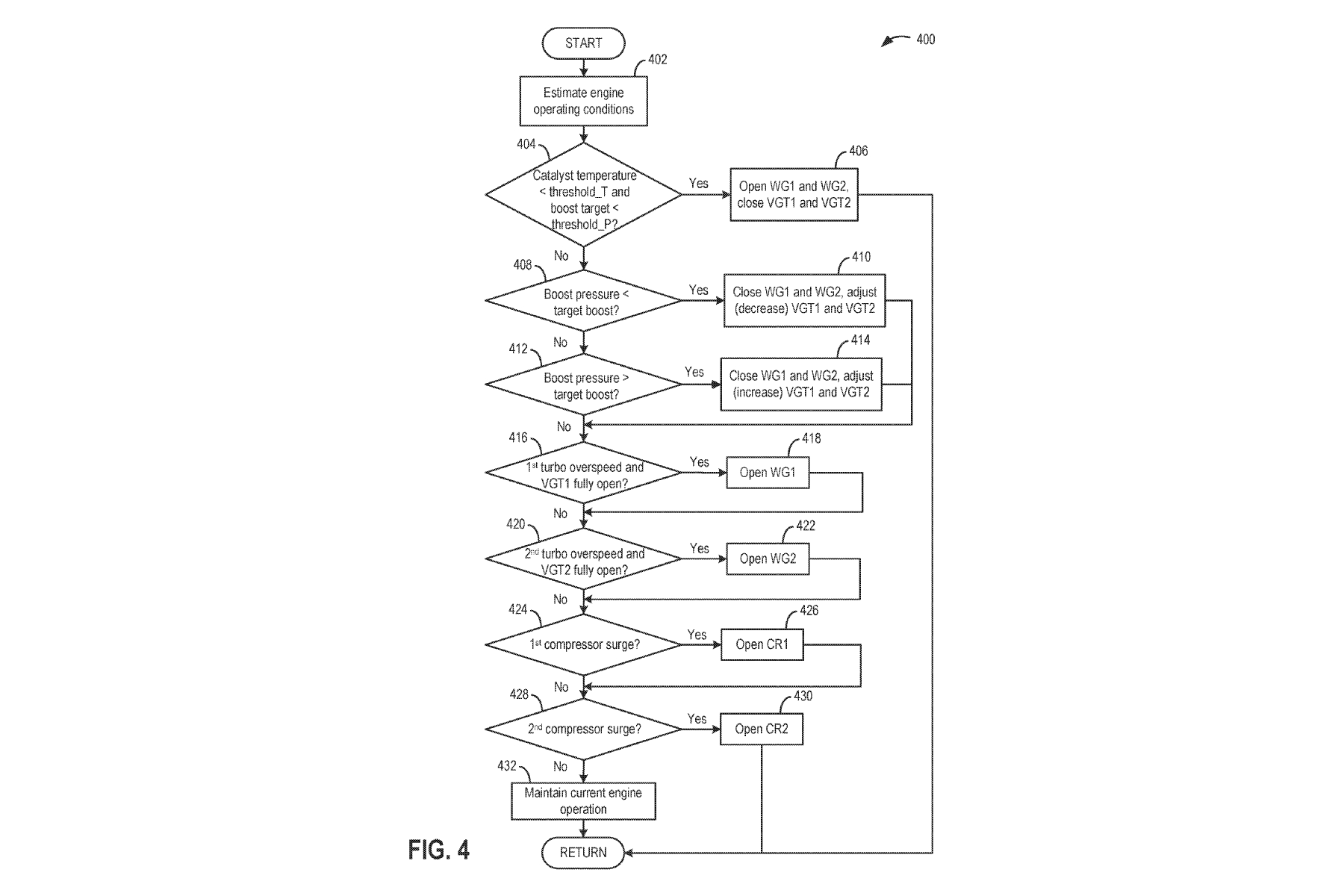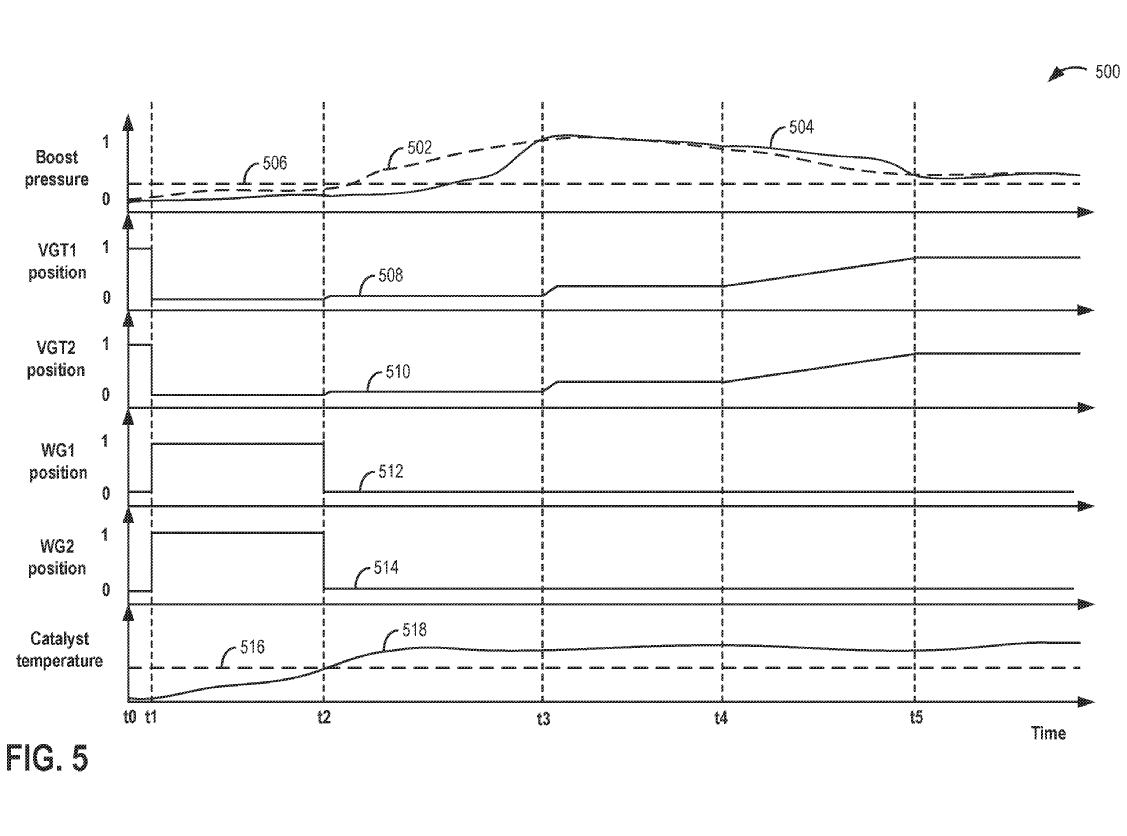
- Ford patent combines the best elements of parallel and compound turbo setups
- Two turbos have identical exhaust housings for quick spool-up but differing compressors for better high-end power
- Effectively a parallel turbocharging setup using compound turbocharging principles
- Variable Geometry Turbines facilitate multiple power levels depending on tuning
- Suitable for gas or diesel engines
- Potentially increases power and efficiency but adds complexity
The compromise between quick boost response and sustained high-end power in a turbocharged engine could soon be a thing of the past, according to a new patent found by CarBuzz at the United States Patent and Trademark Office (USPTO).
Ford's engineers have revisited the concept of compound turbocharging for this new development, but with a number of interesting deviations from the established layout to make it an all-new turbo configuration applicable to both diesel and gas engines. This new boost system may make the V6 EcoBoost engine in the Ford F-150 behave even more like a large-displacement V8 in its low-rev response while making it more powerful at high engine speeds as well - all without adding more turbos to the equation.
Porsche's solution involves splitting in two and electrifying the turbo, but has Ford now come up with something better?
Before we get into the clever details that make this new patent so exciting, let's first take a look at the established multi-turbo layouts. The first thing to remember is that a small turbo has less inertia than a large one, so it is quicker to start boosting. However, small turbos limit the gas flow into and out of the engine, so while they are responsive at low engine speeds, their efficiency drops off as the engine speed mounts.
Large turbos don't have this power drop-off at high speeds, but their added inertia leads to more turbo lag and slower boost response while they spool up. OEM single-turbo setups are usually sized as a compromise between low-speed response and top-end power but cannot deliver both. Consequently, some manufacturers have resorted to twin-turbo setups on larger engines to get most of the response from small turbos while still being able to move enough air to produce decent power at high revs.
The most common approach to multi-turbo installations is the parallel arrangement, as is currently used by the V6 EcoBoost and the majority of other gas-fuelled twin-turbo engines. In this layout, the engine is essentially split into two smaller engines, with each one comprising half the total engine displacement and cylinder count. A twin-turbo six-cylinder, regardless of its block layout, is approximated as two single-turbo three-cylinders, and a twin-turbo V8 is approached as though it were two single-turbo four-cylinder engines.
Each half of the engine has its own exhaust manifold and turbocharger, both of which are the same size and specified to deliver half of the airflow needed to produce the engine's total target power output. This allows the engineers to use two smaller, lighter, and lower-inertia turbos instead of a single large one, which cuts down on turbo lag and lowers the boost threshold (the engine speed at which the turbos start delivering useful boost). However, such a parallel twin-turbo setup still limits the maximum airflow into the engine because those small turbos act like restrictors at high engine speeds.
Some manufacturers have also experimented with sequential twin-turbo setups on gas engines, with the FD Mazda RX-7 and Subaru Legacy B4 from years ago being notable examples of this approach. In this arrangement, a small turbo will take care of boosting duty at low revs, with a larger one taking over at high revs, theoretically combining the advantages of small and large turbos in one package.
You don't see this layout in use anymore, however, because it never really worked all that well. Apart from their compromised flow dynamics and reduced thermodynamic efficiency, such sequential turbo arrangements require a lot of extra plumbing, valves, and other bulky control hardware in an attempt to smooth out the torque curve and achieve a smooth transition between the small and large turbos' delivery ranges. It's a great idea in theory but seldom works well in practice.
The third common twin (or multi-) turbo setup is known as compound turbocharging and is usually used on OEM twin-turbo diesel engines. In this configuration, a larger turbo is used as the first (primary) stage, and it sends all of its through-flow gas to a smaller (secondary) turbocharger.
With compound turbocharging, the large primary turbo's compressor (fresh air) output is connected to the smaller secondary turbo's compressor intake, and the primary turbo's turbine (exhaust) housing exit feeds the secondary turbo's turbine housing entry. Simplified, this means that the primary turbo is the only one to get its intake air from the atmosphere, and it is the only one connected to the engine's exhaust manifold as well. The secondary turbo gets all its gas flow supplies from the primary turbo.
This arrangement effectively multiplies the boost pressure. And, because there's a large, high-capacity turbo forcing its fresh-air output into a smaller turbo before that air goes into the engine's intake manifold, airflow at high engine speeds is improved by a large margin as well. This gives the best of both worlds, with the small turbo providing low-rev response and the large turbo providing sustained top-end stamina.
There are a number of downsides to this setup, though. It creates a lot of heat in the intake charge due to the multi-stage air compression at work, so extra intercooling is usually required. The manifolds and boost pipes are also very convoluted, and their bulky design usually takes up a lot more space than a conventional parallel-twin-turbo arrangement.
While intercooling does reduce the intake charge temperature, gas engines generally need even lower intake temperatures than diesels do to avoid pre-ignition when faced with elevated boost pressures and the increased intake airflow created by this layout. Consequently, compound turbocharging is usually only found on larger diesel engines, where they more easily slot under the hoods of the larger vehicles that require such upsized engines and support systems.
Ford's new patent takes a different approach and introduces a fourth multi-turbo layout to the world of forced induction. By combining design elements from both parallel- and compound turbocharging, it also combines the most desirable characteristics of the two layouts.
The exhaust manifold design detailed in the new patent is exactly the same compact setup as is used in a parallel-turbo design. Both turbos have identically-sized turbine (exhaust) housings, and they both get their exhaust gas inflow directly from the engine.
The main difference can be found in their compressor housings, where the turbos are linked as they are in a compound setup but with a primary intercooler to reduce the intake charge temperature before the air goes into the secondary turbo. The larger primary turbo's compressor side feeds into the secondary turbo's smaller compressor housing entry, from where the air is compressed again before going into the engine after passing through a second intercooler.
This means that, while the larger turbo will take longer to spool up, its added flow capacity will ensure sustained high-rev power, while the smaller turbo's lighter compressor wheel will give the quick boost response needed to ensure driveability at low revs. This new compound-parallel boost system design can be used regardless of the fuel type, be it gas or diesel.
In addition, the patent specifically mentions the use of Variable Geometry Turbos (VGTs), which will further improve the response of both primary- and secondary turbos. VGTs are usually only used on turbodiesel engines because a gas engine typically has much higher exhaust gas temperatures than a diesel does.
Up till now, this has tended to make VGTs unreliable when mated with gas engines unless high-tech materials are used in the exhaust housing's construction to counter the higher exhaust temperature. Porsche manages it with its latest-generation turbo engines, but the cost implications simply make it uneconomical to bring to the mass market.
Ford takes a different approach to the application of VGT turbos on a gas engine by altering the engine's intake valve timing to achieve a Miller combustion cycle. This combustion cycle keeps the intake valves open for the initial part of the compression stroke, which forces some of the intake charge back out of the combustion chamber before the intake valve closes.
This leads to an expansion ratio that is larger than the compression ratio, which not only improves the engine's thermal efficiency but also leads to lower exhaust gas temperatures due to the virtually prolonged expansion stroke. Combining this with fine electronic control over judicious exhaust gas recirculation means that the exhaust gas temperature drops to a level where a normal VGT exhaust housing becomes suitable for application on a gas engine.
These innovations all add up to a radical new way of turbocharging a gas engine. The compounded boost and asymmetrical turbo sizing allow for quick response as well as strong high-rev power, the VGT turbos further improve turbo response, and the Miller combustion cycle improves the engine's thermal efficiency.
This engine will be cleaner and more efficient than established technology will allow, and also shows that, while Ford is already on the EV bandwagon, it clearly hasn't given up on the gas engine, either.

